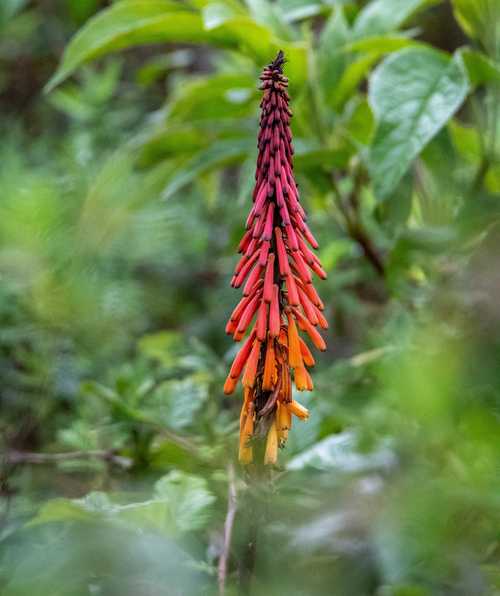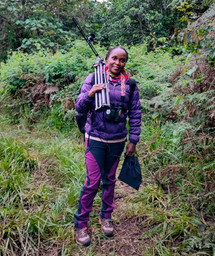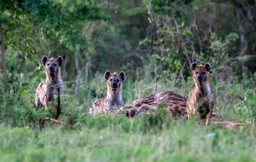
Field recording experiences with earth.fm in Kenya
After being awarded the earth.fm Grant and taking an online field recording course, I embarked on a mission to identify and document captivating soundscapes in Kenya. To select suitable locations, I considered factors such as safety, accessibility, and the absence of human noise pollution. Despite these careful preparations, the challenge of human noise pollution has persisted, prompting me to continuously seek quieter places in Kenya. My journey has involved months of trial and error, where I’ve learned on the go with the incredible guidance and support of the earth.fm team.

One of the key lessons I’ve gained is the importance of eating and staying hydrated before embarking on any field recording sessions. I’ve encountered situations where growling stomach noises disrupted the recording.
I’ve learned to meticulously check my equipment before each session, as well as charging batteries the day before. And using rechargeable batteries or a portable power bank, rather than disposable batteries, is not only more cost-effective, but more eco-friendly.
Wearing quiet clothing is something else I’ve incorporated into my field recording practices. It’s also essential to get comfortable before hitting the record button, as even minor movements can be picked up by the microphone. Setting my phone to airplane mode has been another practical lesson, as neglecting to do so can result in unwanted static that ruins recordings. But, as an emerging field recordist, I’ve come to understand that the best recording device is the one you have at your disposal. With the market flooded with new brands and options, it can be overwhelming.
As an emerging field recordist, I’ve come to understand that the best recording device is the one you have at your disposal.
My experiences so far have made me appreciate the importance of quiet natural environments with minimal human noise pollution. The increasing global population has led to escalating demands on land and ecosystems, diminishing the availability of ‘natural quiet’. My field recording journey has made me appreciate how vital it is to preserve quiet natural places, reminding us to cherish (and document) them before they vanish. Studying maps to find locations with a potential for silence has also been incorporated in my practice.
As a woman, safety has been another crucial aspect of my journey. I’ve learned to consider various safety elements, including having someone with me who understands the importance of silence in the wild, and hiring additional guides or rangers to ensure security during my expeditions.
Throughout this process, I have recorded soundscapes in various locations around Mt. Kenya and in the Maasai Mara National Reserve. However, due to some of the challenges highlighted in this post, they were not ideal in terms of length or aesthetic. Despite these challenges, I hope you are able to enjoy the short snippets of natural sounds which I have been able to capture.
Dusk chorus at Castle Forest Lodge, Mt. Kenya
In July, I embarked on a field recording expedition to Castle Forest Lodge, on the southern slopes of Mt. Kenya. This trip presented significant logistical challenges. The road to the lodge was muddy and slippery due to rainfall the previous day, but we managed to navigate it on a motorbike! Upon arrival, I scouted potential recording sites, but the cold drizzle made it impossible to leave my recording equipment outdoors. That night, I lay awake, eagerly listening to the distant calls of tree hyraxes, colobus monkeys, and crickets.
🎧 Listen to Martha’s dusk chorus in Mount Kenya
In the morning, I woke up early to capture the dawn chorus, only to be greeted by the soothing but unwelcome sound of rain on the roof. The birds were singing, but they were too far away and it was too wet and cold to record them. However, in the afternoon, I managed to capture a bit of the dusk chorus from the forest: a harmonious blend of forest fog dripping on leaves, the songs of birds, the calls of parrots, and the growls of black-and-white colobus monkeys as they retreated to their evening roosts.
Tree hyraxes’ nocturnal calls at Naro Moru, Mt Kenya, June 2023
Upon arrival at some of the hotels around Mt. Kenya, guests are notified that strange noises and calls may be heard at night. They are assured that the hotel they have checked into is not haunted. Guests exchange bewildered looks, shrug, and immediately forget the warning as soon as they settle into their rooms.
Then it begins: the loud shrieks of the tree hyraxes fill the night. They are scattered among the trees in the hotel compound, and not even loud music can mask their deafening calls. Tree hyraxes are medium-sized mammals which live in the canopies of tropical forests. They are shy and move only at night, to forage for food or look for mates. The calls eventually quieten down, before rising once more in the wee hours of the morning. These are my favorite times of the day. While the world slumbers, I listen to the haunting call of the tree hyrax, a unique and captivating melody that unfolds in the stillness of the night!
A wild feast at the Maasai Mara National Reserve, October 2023
I recently visited the reserve on an assignment. Though it was not a field recording trip, I always travel with my kit. It was rainy in the park, so I didn’t record for several nights as the kit is not waterproof.
One night, nature took its course when a giraffe died of old age. This was confirmed by wildlife vets and one of the local wardens, who have vast knowledge of nature and wildlife behaviors. According to them, there were no signs of attacks by humans or other predators, or of disease. From the way the body lay, it seemed to have fallen, but wasn’t able to stand due to being weak after hitting its head on the ground. Additionally, the giraffe had teeth missing, probably due to old age.
I expected that the carcass would soon attract scavengers. As the day progressed, some jackals and hyenas showed up to survey the scene. They would try to bite off some meat, before running away. Because these species are mainly active at night, I placed my recorder in a tree next to the carcass to try to capture the sounds of them feasting on the carcass.

The otherwise silent night was soon filled with the eerie symphony of hyenas cackling and shrieking, while the jackals barked and growled at each other as they fed on the carcass. In the background, the guttural calls of toads and frogs, coming from a nearby water pan, added to the nocturnal chorus. The song of a montane nightjar was also audible in the distance.
Scavengers’ role in consuming the remains of dead animals is vital for maintaining ecological balance, preventing the spread of disease, and ensuring the continuity of the circle of life! This event was an emotional reminder that in the midst of nature’s beauty and tranquility, there also exists an undeniable air of sadness and unpredictability.
Martha is a Kenya-based freelance tour leader who shares stories about conservation through photography, filming, writing, and field recording. She’s passionate about nature, conservation and ecotourism. Her work has been published in print and on digital platforms, and she has won recognition in national, environment-themed contests.
🎧 You can connect with Martha on LinkedIn, Flickr, Instagram, Twitter, YouTube, TikTok, visit her website, and listen to her recordings on SoundCloud.
Featured photo by Martha Mutiso
All photos and recordings courtesy of Martha Mutiso
Earth.fm is a completely free streaming service of 1000+ nature sounds from around the world, offering natural soundscapes and guided meditations for people who wish to listen to nature, relax, and become more connected. Launched in 2022, Earth.fm is a non-profit and a 1% for the Planet Environmental Partner.
Check out our recordings of nature ambience from sound recordists and artists spanning the globe, our thematic playlists of immersive soundscapes and our Wind Is the Original Radio podcast.
You can join the Earth.fm family by signing up for our newsletter of weekly inspiration for your precious ears, or become a member to enjoy the extra Earth.fm features and goodies and support us on our mission.
Subscription fees contribute to growing our library of authentic nature sounds, research into topics like noise pollution and the connection between nature and mental wellbeing, as well as funding grants that support emerging nature sound recordists from underprivileged communities.
